An a island country located in the Indian Ocean ” Sri lanka” – By Malsha – eLanka
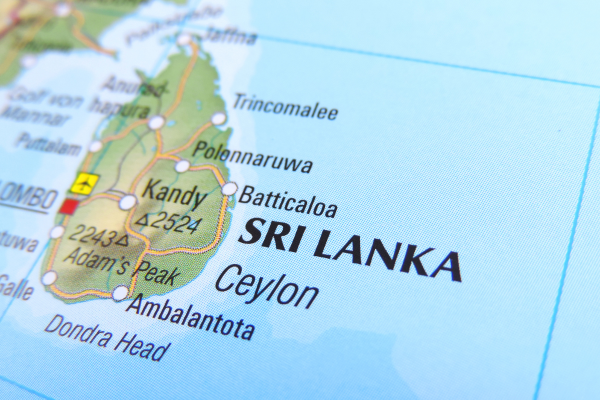
Sri Lanka, officially the Democratic Socialist Republic of Sri Lanka, is an island country located in the Indian Ocean, off the southern coast of India. The country has a rich cultural heritage and a history that spans over 3,000 years.
The capital and largest city of Sri Lanka is Colombo, which is located on the west coast of the island. The country has a population of approximately 21 million people, with Sinhalese being the largest ethnic group, followed by Tamil and Muslim communities.
Sri Lanka is known for its beautiful beaches, lush tropical forests, and ancient Buddhist temples. It has eight UNESCO World Heritage sites, including the ancient city of Anuradhapura and the Sigiriya rock fortress.
The economy of Sri Lanka is primarily based on agriculture, with tea, rubber, and coconut being some of the major crops. The country is also a significant exporter of apparel, textiles, and other manufactured goods.
Sri Lanka has a diverse wildlife, including elephants, leopards, and various species of primates. The country is also home to a large number of bird species, making it a popular destination for birdwatchers.
In recent years, Sri Lanka has faced political instability and ethnic tensions, which have had an impact on the country’s tourism industry. However, the country remains a popular travel destination for its natural beauty, rich history, and vibrant culture.
Nature of sr lanka
Sri Lanka has a rich natural environment with a diverse range of ecosystems including forests, wetlands, rivers, mountains, and coastlines. The country is known for its stunning natural beauty, including its pristine beaches, lush tropical rainforests, and diverse wildlife.
One of the most notable features of Sri Lanka’s natural environment is its biodiversity. The country is home to a vast array of plant and animal species, many of which are endemic to the island. The Sinharaja Forest Reserve, which is a UNESCO World Heritage Site, is one of the best-preserved tropical rainforests in the world and is home to a large number of endemic species.
Sri Lanka also has a rich marine environment, with an extensive coastline and a range of marine habitats, including coral reefs, mangroves, and seagrass beds. The country’s waters are home to a diverse range of marine species, including dolphins, whales, sea turtles, and a variety of fish species.
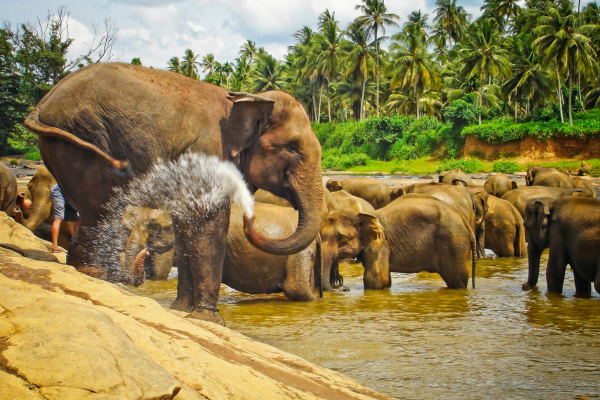
In addition to its natural beauty, Sri Lanka is also known for its impressive landscapes. The country has several mountain ranges, including the Central Highlands, which are home to Sri Lanka’s highest peak, Mount Pidurutalagala. The country’s many waterfalls, including the impressive Bambarakanda Falls, are also popular tourist attractions.
Overall, Sri Lanka’s natural environment is a significant part of the country’s cultural and economic heritage, and it plays a critical role in supporting the livelihoods of many Sri Lankans. However, like many other countries, Sri Lanka is facing challenges related to environmental degradation and climate change, and efforts are underway to address these issues and protect the country’s natural resources for future generations.
History of sri lanka
Sri Lanka has a rich and complex history that dates back over 3,000 years. The island has been inhabited by various ethnic groups, including the Sinhalese, Tamils, and Moors, and has been ruled by different kingdoms and empires throughout its history.
The earliest known civilization in Sri Lanka was the Anuradhapura Kingdom, which was founded in the 4th century BC by King Pandukabhaya. The Anuradhapura Kingdom was a center of Buddhist culture and religion and is home to several impressive archaeological sites, including the ancient city of Anuradhapura.
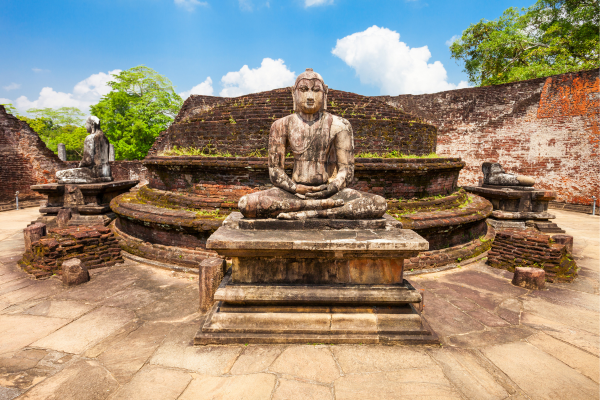
Over the centuries, Sri Lanka was ruled by various kingdoms and empires, including the Chola dynasty of South India, the Polonnaruwa Kingdom, and the Kandyan Kingdom. In the 16th century, the Portuguese arrived in Sri Lanka and established a foothold on the island, followed by the Dutch and the British, who eventually took control of the island in the 19th century.
Sri Lanka gained independence from British rule in 1948 and became a republic in 1972. However, the country has also faced significant political instability and conflict, including a 26-year-long civil war between the Sri Lankan government and the Tamil Tigers, a separatist group that sought to establish a separate Tamil state in the north and east of the country. The conflict ended in 2009 with the defeat of the Tamil Tigers.
Today, Sri Lanka is a democratic country with a complex multicultural society and a rich cultural heritage. The country’s history has had a significant influence on its culture, religion, and traditions, and this legacy can be seen in its art, music, literature, and architecture.
Religions in sri lanka
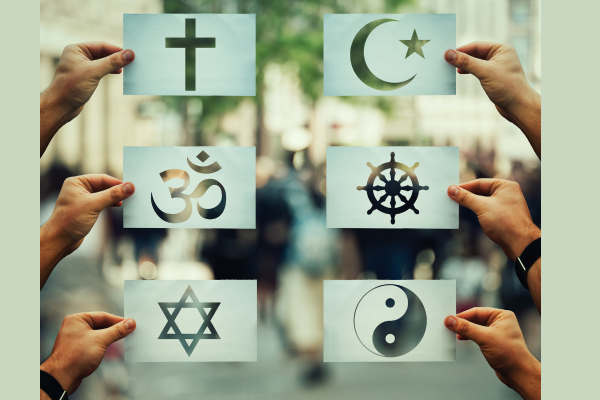
Sri Lanka is a religiously diverse country with four main religions: Buddhism, Hinduism, Islam, and Christianity. Buddhism is the most widely practiced religion in the country, with approximately 70% of Sri Lankans identifying as Buddhists.
Buddhism has a long history in Sri Lanka and is deeply ingrained in the country’s culture and traditions. The majority of Sri Lankan Buddhists belong to the Theravada tradition, which is considered the oldest surviving branch of Buddhism and emphasizes the teachings of the Buddha.
Hinduism is the second-largest religion in Sri Lanka, with approximately 12% of the population identifying as Hindus. The majority of Sri Lankan Hindus belong to the Saivite tradition, which venerates Lord Shiva as the supreme deity.
Islam is the third-largest religion in Sri Lanka, with approximately 9% of the population identifying as Muslims. The majority of Sri Lankan Muslims are Sunni Muslims, although there is also a small Shia Muslim community in the country.
Christianity is the fourth-largest religion in Sri Lanka, with approximately 7% of the population identifying as Christians. The majority of Sri Lankan Christians are Roman Catholics, although there are also Protestant and Orthodox Christian communities in the country.
Despite the diversity of religions in Sri Lanka, there have been occasional tensions and conflicts between religious groups. However, the country’s constitution guarantees freedom of religion, and the government has taken steps to promote interfaith dialogue and harmony.
Culture of sri lanka
Sri Lanka has a rich and diverse culture that is influenced by its long history and its multiethnic and multireligious population. The country’s culture is characterized by its colorful festivals, traditional music and dance, delicious cuisine, and impressive architecture.
One of the most distinctive aspects of Sri Lankan culture is its festivals. The country celebrates a variety of religious and cultural festivals throughout the year, including the Sinhala and Tamil New Year, the Esala Perahera (a grand Buddhist procession), and the Kandy Perahera (a grand Hindu procession).
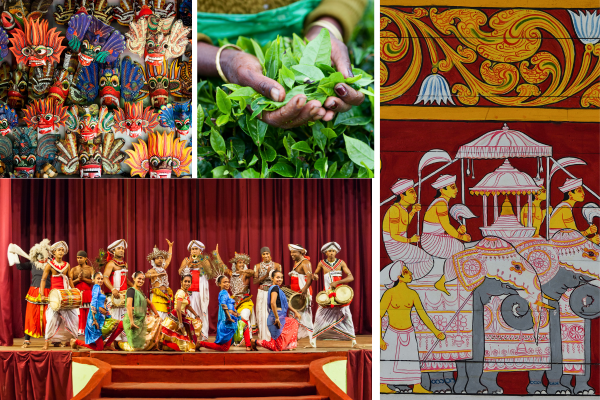
Sri Lanka is also known for its traditional music and dance. The country’s traditional dance forms, including Kandyan and Sabaragamuwa, are known for their intricate footwork, rhythmic movements, and colorful costumes. Traditional music is often performed on the country’s indigenous instruments, such as the drum and the flute.
The country’s cuisine is also an important part of its culture. Sri Lankan cuisine is known for its bold flavors and the use of spices such as cinnamon, cardamom, and turmeric. The country’s cuisine is heavily influenced by its geography, with seafood, rice, and coconut featuring prominently in many dishes.
Sri Lanka is also home to impressive architectural monuments, including ancient cities, temples, and palaces. The ancient city of Anuradhapura, which dates back to the 4th century BC, is a UNESCO World Heritage site and home to several impressive Buddhist temples and ruins. The Sigiriya rock fortress, which was built in the 5th century AD, is another famous architectural monument and is considered one of the country’s most iconic landmarks.
Overall, Sri Lanka’s culture is a vibrant and fascinating mix of traditions and influences from its long history and diverse population.
sri lankan traditions
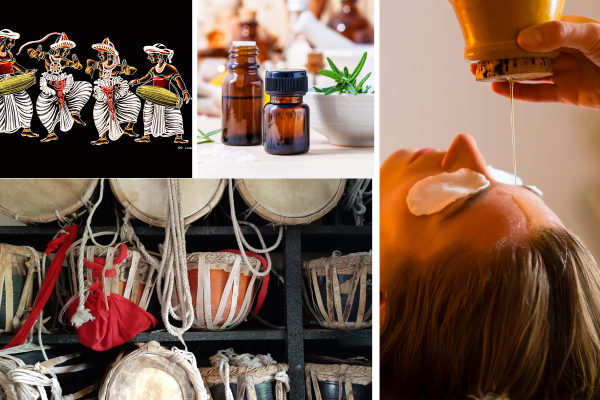
Sri Lanka has a rich and diverse set of traditions that are influenced by its long history, multiethnic and multireligious population, and natural environment. Here are a few examples of traditional practices and customs that are still observed in Sri Lanka:
- Ayurveda: Ayurveda is a traditional system of medicine that originated in India and has been practiced in Sri Lanka for thousands of years. It is based on the concept of balancing the body’s energy or doshas through natural remedies, including herbs, massage, and dietary changes.
- Tea culture: Sri Lanka is famous for its tea production, and tea drinking is a popular tradition in the country. Sri Lankan tea is known for its unique flavor and aroma, and tea estates and factories can be found throughout the central highlands.
- Traditional clothing: Sri Lankan traditional clothing varies by region and ethnicity but generally includes colorful and ornate garments. The saree is a popular traditional garment for women, while men often wear a sarong and a shirt.
- Religious practices: Sri Lanka is home to several religions, and religious practices play an important role in Sri Lankan culture. Buddhists often participate in meditation and offer flowers and incense at temples, while Hindus perform puja (worship) rituals and make offerings to deities. Muslims observe daily prayers and participate in Ramadan fasting, while Christians attend church services and celebrate Christmas and Easter.
- Hospitality: Sri Lankan hospitality is renowned for its warmth and generosity. Guests are often treated with great respect and offered refreshments and food, and hosts often go to great lengths to ensure their guests feel comfortable and welcome.
These are just a few examples of the many traditions that make up Sri Lankan culture. The country’s rich history and diverse population have contributed to a vibrant and fascinating set of customs and practices that continue to be observed and celebrated today.







